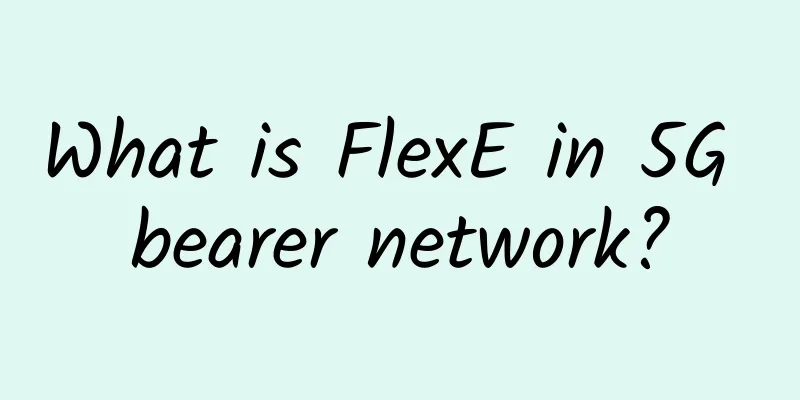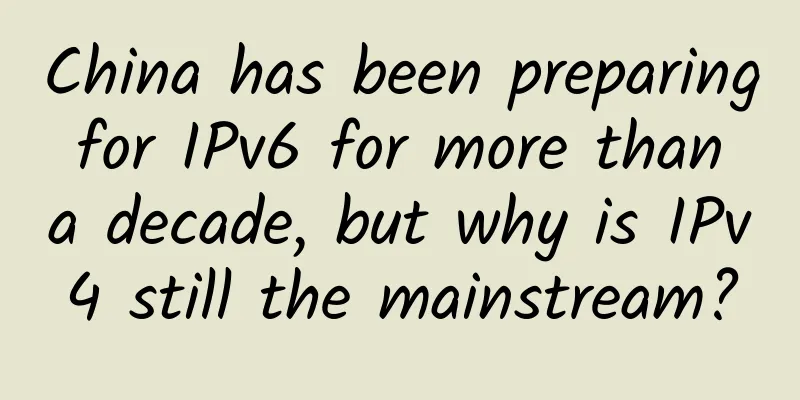What is FlexE in 5G bearer network?

|
This article is reprinted from the WeChat public account "Xianzao Classroom", the author is Xiaozaojun. Please contact the WeChat public account of Xianzao Classroom to reprint this article. Entering the 5G era, when we learn about transmission networks, we often see the prefix "Flex". For example, FlexE, FlexO, FlexHaul, Flex Grid, FlexXXX... So, what does Flex mean? That’s right, Flex is the abbreviation of Flexible in English, which means “flexible, changeable, and tough”. So what is the E in FlexE? E is the "Ethernet" that we are all familiar with. When you learn computer networks, the first lesson should introduce Ethernet. What are CSMA/CD (Carrier Sense Multiple Access with Collision Detection), bus topology, and 100BASE-T? Do you still remember them? The earliest Ethernet was born in the 1970s. A Harvard PhD named Bob Metcalfe, using the inspiration he gained from studying at the University of Hawaii's Aloha Project (the world's earliest radio computer communications network), designed and implemented the world's first Ethernet at the Xerox Palo Alto Research Center with another colleague, David Boggs.
Bob Metcalfe, the creator of Ethernet Later, in 1982, Xerox, DEC and Intel formed the DIX Alliance, jointly announced the Ethernet Version 2 (EV2) specification, and put it into the commercial market, which has been widely used.
Yes, it's Xerox, the company that sells printers. This EV2 is the 10BASE5 recognized by IEEE. 10 represents the speed of 10Mbps, BASE represents the transmission signal modulation method is baseband modulation, and 5 represents the transmission distance of 500 meters. After the birth of Ethernet, it has developed rapidly, gradually evolving from the initial bus Ethernet (also called classic Ethernet) to switched Ethernet. The speed of Ethernet has gradually evolved from 1Mbps, 10Mbps, 100Mbps to 1Gbps, 10Gbps, 100Gbps... The transmission medium of Ethernet has also changed from early coaxial cable to twisted pair (appeared in the late 1980s) and then to optical fiber (appeared in the mid-to-late 1990s). Ethernet Evolution (Click to see larger image) In the OSI seven-layer model, Ethernet is the technology of the data link layer and the physical layer. In the TCP/IP model, it is the network interface layer. Now let’s go back to light. After entering the 2010s, people began to find that the development of optical transmission equipment was gradually unable to keep up with demand. On the one hand, there are many optical communication scenarios, and UNI (User Network Interface) may have many situations, while the underlying optical transmission link interface and module are fixed, making it difficult to cope with these changes. For example, the optical transmission equipment only has three 40G channels, while our business is 100G. On the other hand, the price of high-speed optical modules is too high and will not be reduced in a short time. The industry needs to find a lower-cost solution. For example, the price of one 400G optical module is higher than that of four 100G modules combined. So, is it possible to achieve high speed by binding multiple low-speed modules? Therefore, people began to think about whether the Ethernet interface rate and the optical transmission capacity rate can be decoupled. This is what we often call "decoupling". To realize this goal, OIF (Optical Internetworking Forum) launched FlexE in 2016. FlexE functions a bit like a "super gear". Based on the traditional Ethernet architecture, it introduces a new FlexE Shim layer to achieve the decoupling of MAC (media access control sublayer, belonging to the data link layer) and PHY (physical layer). The data flow rates of the upper and lower layers are no longer forcibly bound. The following figure shows the FlexE architecture:
Corresponding to various user interfaces (UNI) of the network, it is consistent with the traditional service interfaces in the existing IP/ETH network. It can be flexibly configured according to bandwidth requirements, such as 10G, 40G, 100G, 200G, and n*25G.
Essentially, it is a variety of Ethernet physical layers (PHY) defined by the IEEE 802.3 standard.
FlexE Shim is the core of the entire FlexE. It divides each 100GE PHY in the FlexE Group into 20 slots (time slots) of data-bearing channels. The group of slots corresponding to each PHY is called a Sub-calendar, and the bandwidth corresponding to each slot is 5 Gbps. FlexE frame structure (Source: Flexible Ethernet Technology White Paper) The Ethernet frames in the original data stream of the FlexE Client are segmented into atomic data blocks (64/66B encoded data blocks). These atomic data blocks can be distributed among multiple PHYs and time slots in the FlexE Group through the FlexE Shim. Since the bandwidth of each slot in the FlexE Group's 100GE PHY is 5 Gbps, the FlexE Client can theoretically also be set up in any number of combinations at 5 Gbps rate granularity, supporting more flexible multi-rate bearer. (Note that the bandwidth of each slot in the initial FlexE version is 5 Gbps. Later FlexE versions have introduced other sizes.) In simple terms, FlexE has three functions: bundling, sub-rate, and channelization.
Bundling means tying up multiple small water pipes and using them for a large data flow. Multiple PHYs work together to support higher rates. For example, 4-way 100GE PHY can achieve 400G MAC rate.
Sub-rate is one or more large water pipes for a small data stream. A single low-rate MAC data stream shares one or more PHYs and is decelerated through a specially defined Error Control Block. For example, only 75G MAC data flow is carried on 100G PHY.
Channelization is one or more large water pipes for several small data streams (or large data streams). Multiple low-rate MAC data streams share one or more PHYs. For example, three MAC data streams of 10G, 40G, and 50G are carried on 100G PHY, or 125G MAC data streams are multiplexed on two 100G PHYs. Here are some animated pictures to make it clearer: Channelization Channelization Channelization + bundling In short, FlexE supports different service bandwidths under different infrastructure conditions. This is the so-called "flexibility". Based on the FlexE channelization function, operators can build end-to-end pipes on existing lines, and the service levels of these pipes can be different. You may also think of network slicing. Yes, Flex can also meet the needs of network slicing. 5G network slicing based on FlexE (Source: Flexible Ethernet Technology White Paper) FlexE makes some "small changes" based on existing technical standards and equipment to achieve flexible rates, greater bandwidth, and channel isolation. It can be said that it is both cost-effective and easy to use. Such technology is naturally welcomed by everyone. At present, OIF has developed the standard to version 2.1. Now, FlexE has been recognized as one of the key technologies of 5G bearer networks and the core of the third-generation Ethernet technology. Ethernet Generation 3 Well, that’s all for today. Thank you for your patience in reading. If you find the article useful, please help us forward it! Thank you! References: 1. Flexible Ethernet Technology White Paper, Huawei, China Telecom 2. "Flex Ethernet: breaking the chains of physical bandwidth", Anabel Alarcan 3. "Flex Technology", Communications Encyclopedia 4. Chalk Talk: What is FlexEthernet? |
Recommend
The global 5G IoT market is expected to see rapid growth
According to a report released by Research Dive, ...
2G and 3G network retirement countdown, your old mobile phone may have to be thrown away
This also means that 2G and 3G technologies will ...
HostDare: 25% off NVMe disk VPS in Los Angeles starting at $19.49/year
HostDare has launched a new promotion for the Los...
Taking stock of Internet companies that have deployed blockchain: Is blockchain a "panacea" or a "scam"?
Bitcoin was launched in 2009. As the price of Bit...
What kind of network slicing does 5G require?
Everyone should be familiar with network slicing....
#Has run away#Limewave: $12.9/year KVM-1GB/15GB SSD/3TB/Seattle data center
【Attention】This merchant has run away!!! Limewave...
What is the difference between localhost and 127.0.0.1? Do you know?
When front-end developers are debugging locally, ...
After 5G entered the market, the driving effect began to emerge
On September 21, the three major operators releas...
What is Open RAN?
Open RAN is an industry standard designed to powe...
LisaHost: Taiwan ISP residential native IP host 10% off monthly payment starting at 43 yuan, unlock streaming media, 1Gbps bandwidth
We have previously shared Lisahost's US dual ...
Four waves, closing the TCP connection
[[428968]] This article is reprinted from the WeC...
5G starts with the network taking the lead. H3C MSR 5G router promotes the implementation of 5G applications
In the era of the Internet of Everything, 5G, as ...
In order to make your Internet more enjoyable, what have routers experienced over the years?
[[411615]] It has to be said that the development...
5G will redefine the products and services of telecom operators
[[388868]] There is a seemingly endless list of 5...
The ancestral motto of data center operation and maintenance is "no trouble, no failure"
Although the saying "no trouble, no failure&...









